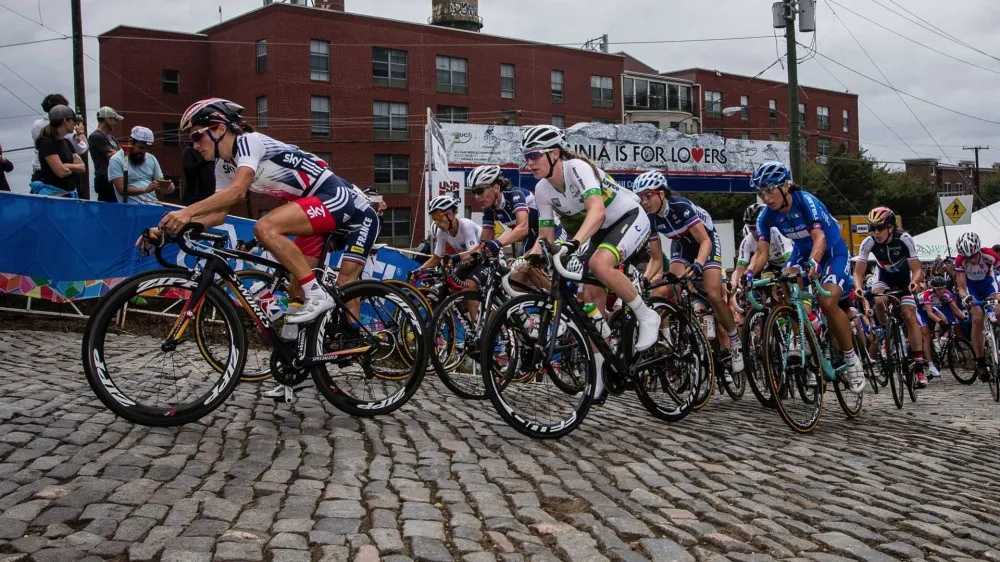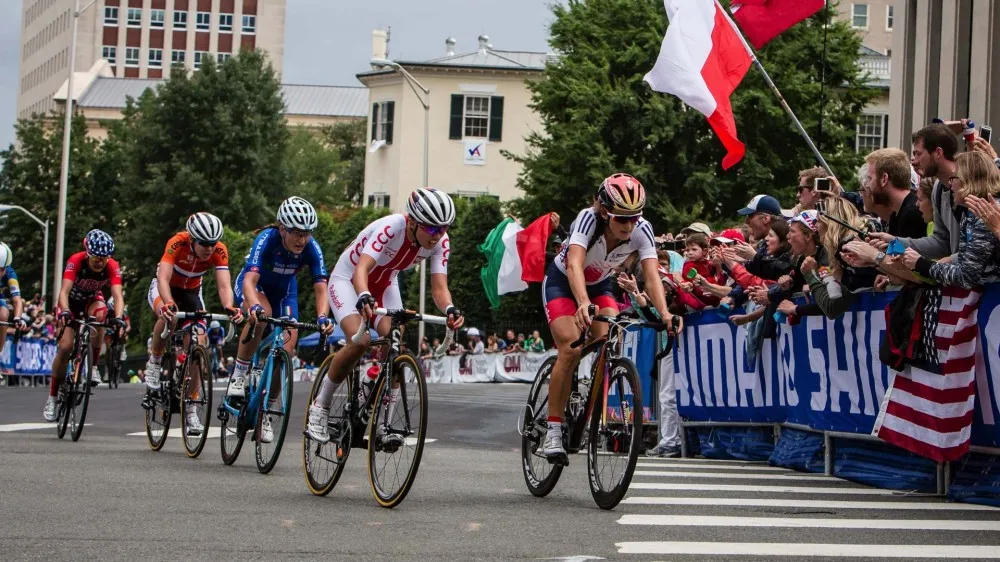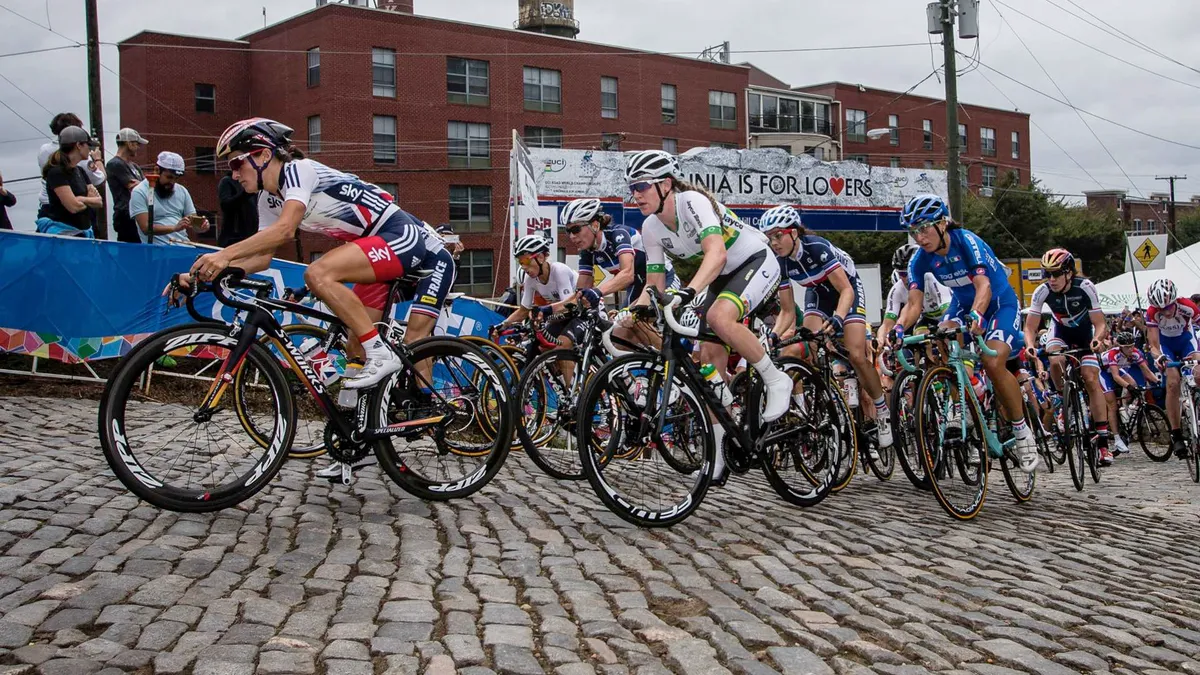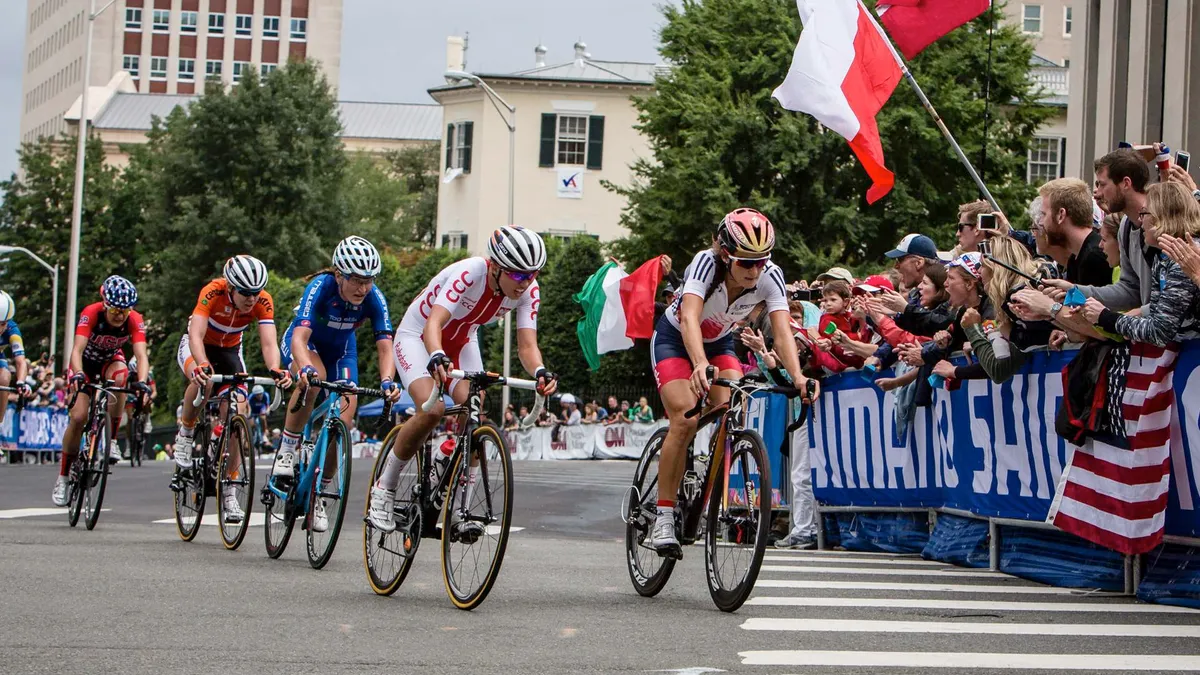Yorkshire's Lizzie Armitstead is on top of the world right now, after clinching the 2015 Road World Championships in Richmond, Virginia on Saturday (26 September) with supreme tactical nous in the finish sprint.
From gear selection to knowing when to stand up on the pedals and how to pace your efforts, check out these top climbing tips from one of Britain's very finest cycling talents...
Warm-up
“In order to make climbing easier, it’s good to get a good warm-up in beforehand,” the 26-year-old advises. “Usually in the peloton we’re riding on the flat and in a group before we hit the slopes, so that’s a warm-up in itself on top of the rolling we do next to the team bus. If I’m training then I make sure I do get some miles in before – then choose a climb I know in order to test myself against previous bests.
“It’s a good technique to follow if you’re trying to improve your climbing, no matter what your ability. Short steep climbs will help improve your power, while longer more gradual climbs help with your general condition and fitness."
Record your ride
Armitstead says: “Most people now have smartphones or a bike computer that can record your ride while out. Some even have functions that give you a virtual rider to ride against. It can either be a target time, or one of your old personal bests. Either way, keeping motivation on a climb is important so using these functions in any way can be useful.”
Get your gears right

“Gearing on a climb is often down to personal choice but it's important not to over gear on a climb either,” Armitstead suggests. “Turning the pedals slowly tires out your muscles quicker, while pedaling faster moves that effort from the muscles to the cardiovascular system.
“You should always be ready to change gear as often as you need to, to maintain your effort. A good way of doing this is to change gear early, before you actually ‘need’ to, so you’re ready to deal with what’s coming. That way you don’t shock your body if it suddenly gets steeper and you minimise the risk of dropping your chain when you have to change gear under a lot of force.”
Be stylish
Armitstead adds: “Theoretically, standing up on the pedals is more powerful as you can shift your weight down onto the pedal when pushing – but this in turn takes more effort. Climbing seated isn’t quite as powerful – but uses less energy and so is more efficient over a longer distance. Use a standing style if you’re trying to attack or get over a particularly steep bit of road – or both! – and stay seated for the remainder.”
Find the right pace

“You learn pacing by putting in practice,” says Armitstead. “You have to know where your limits are. If you don’t, you run the risk of pedaling too hard at the bottom and having nothing left further up. When you get it right, pacing is really important and makes a big difference to your performance.
“If you can record your ride using a GPS device, on one of your training climbs try putting in more effort at different points during the climb. Then you can analyse your times on different sections of the climb and see if you’re better off powering up the steep sections and recovering during the climb, or taking it a bit easier and leaving something for the end.”
Find the right position
Armitstead adds: “Riding in a group takes a different set of skills, but if you can develop those too then use them on a climb. Riding behind someone of a similar ability is always helpful – you can follow in their slipstream and save yourself around 30 percent of your energy.
“On a climb though, it’s best to follow to the outside of the rider in front so that you’ve got room to manoeuvre of they suddenly slow down. Also, a good little tip is to get yourself near the front before a climb starts if you’re not confident you can stay with your group all the way up. That way, you can slide back slowly as you ride up the climb. Hopefully by the time you reach the summit you’ll be somewhere near the group (if not still in it) and be able to chase back on the descent!”



